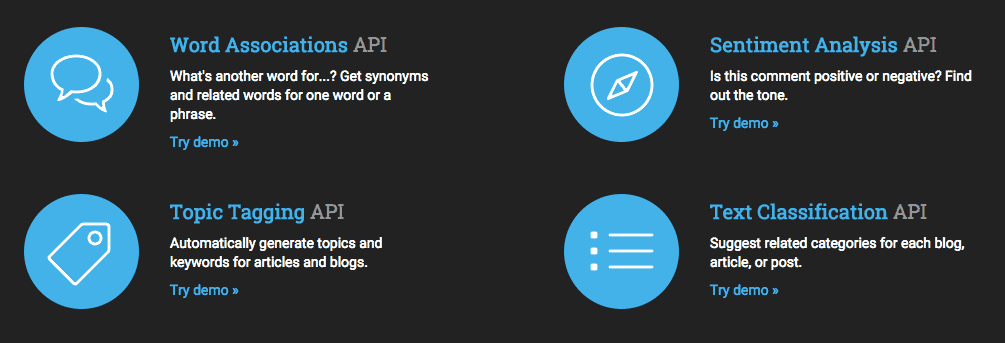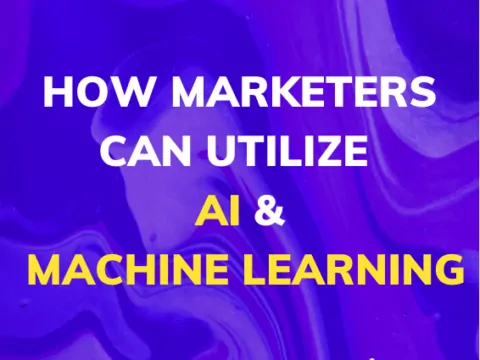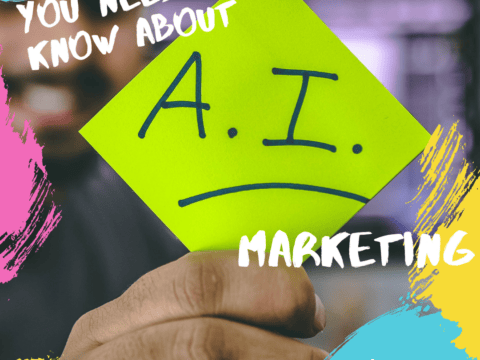Artificial Intelligence (AI) has been very much integrated into our lives in the 21st century. Little did we know that the very first trace of AI dated back to the 1950s. According to the infographic by Narrative Science, the seminal paper “Computing Machinery and Intelligence” written by Alan Turing is the first AI concept ever introduced. It was the first publication in the 1950s to introduce the AI concept of what is now known as the Turing test to the general public.
AI today has evolved, along with the availability of countless applications that benefit both consumers and businesses. The infographic depicts the development timeline of AI across different industries, allowing businesses to make use of these insights to make wise business decisions.
We can see a trend particularly in the Natural Language Processing field, where focuses are being placed on teaching machine to understand human text. It is believe that when the raw/unstructured data are being organized and classified in a structured way, it can be a set of valuable information for predicting trends. (Read our previous post: Sentiment Analysis For the Financial Sector)
The Difference Between AI and Machine Learning
Machine learning is an application of AI. It’s the process of using mathematical models of data to help a computer learn without direct instruction. This enables a computer system to continue learning and improving on its own, based on experience. (Source: Microsoft)
According to Stanford University’s definition, Machine Learning is the science of getting computers to act without being explicitly programmed.
Through evolution, machine learning has made self-driving car possible, enabled smart phones to do speech recognition, and effectively optimized our web search experience. Machine learning has grown to be so sophisticated today, that it could even understand human text!

Image credit of www.cs.toronto.edu
Machine learning and pattern recognition can be viewed as two facets of the same field. (Wikipedia) In layman terms, it is how computers are programmed to recognise similar patterns or repeated behaviour that occured over a period of time. Using the knowledge learnt from previous behaviours, the computer is able to predict sets of behaviours that might occur when a similar past phenomenon happens.

nfographic credit of Narrative Science.
Types of Machine Learning
From an academic proposition, the strength of deep learning (or old-fashioned neural network, SVM based machine learning, etc) is that, it is relatively low cost. To implement machine learning, as the name suggests, all you have to do is to “train” the machine with a bunch of data. The downside aspect of this approach however, is the compromising of its quality. Especially in the case where there is an absence of large amount of data comparing to social media sites such as Twitter and Facebook, the shortage of training data will result in poor quality.
Unlike deep learning approach, semantic approach (in other words ontologies with rules) are comparably high in cost, though with proper investment (in developing rules and ontologies), it can achieve superior quality.
To each its own, both approaches have their own merits and downsides depending on your enterprise needs. If the budget is limited, go with deep learning, if the quality is a critical success factor, go with semantic approach. If you want to build your own product or solution, I would recommend a combination of these methods (in other words, the hybrid tool). The hybrid approach can be the most flexible and stable method to deal with enterprise data though there may be the need for a more experienced architectural consideration and a higher maintenance cost.
Applications of Machine Learning
Machine learning has been integrated into our daily life with or without us noticing. Ever notice how related advertisements are being served to us after visiting certain websites? Machine learning of consumer behaviour has brought online marketing and advertising ROI to new heights. Search engines and other agencies track and monitor the links you click or the contents you search on the internet, and subsequently process the information to serve advertisements that are related to your search query or one that you may be interested in. Studies have shown that behaviour advertising campaigns receive twice as much click-through-rate than usual!
Machine learning is also used in email spam detection. Google and Yahoo Mails filter out emails with certain keywords that appears frequently in spam emails. The system recognise, analyse and remembers the words and content of emails that are marked as spammed by the user and utilizes the knowledge to filter out possible spam mails.
On another personal note, our smart phones that we can’t live without, are all equipped with sophisticated machine learning ability. If you’re a Android user, you might have noticed Google prompting you to log down a certain place that you frequent as your work place or home. Thereafter, you may receive information cards from Google about the current traffic conditions to your work place, and/or directions for taking the public transport home. Automatic speech recognition functions that are capable of deciphering speech to text such as Siris, Cortana and Ok Google are all powered by machine learning technology.
Other possible applications include:
– Automated Security Verification (voice, face, fingerprint recognition)
– Automated Medical diagnostics (detecting illnesses from symptoms)
– Content Categorization (text, image, video)
– Pattern mining (stock market analysis, technical analysis of stock price)
– Natural Language Processing (sentiment analysis, searcher’s intent, statistical machine translation)
Twinword provides Human Text Understanding APIs that are powered by Machine Learning and Smart NLP Technology. Visit our API demo page to find out more!
P.S. If you are interested in how machine learning technology can be applied to the financial sector, please visit this post.





13 Comments
I just wanted to thank you for all your hard work. I’ve been enjoying the content on Content so much, and it’s been such a refreshing change from all the other content I’ve been seeing lately!
Awesome blog. I enjoyed reading your articles. This is truly a great read for me. I have bookmarked it and I am looking forward to reading new articles. Keep up the good work!
I just read through the entire article of yours and it was quite good. This is a great article thanks for sharing this information. I will visit your blog regularly for some latest post.
Great share! Usually, I never comment on blogs but your article is so convincing that I never stop myself to say something about it. You’re doing a great job Man, Keep it up.
Was looking for this post since a while. Very well explained. Looking forward to see more of such interesting posts from you..
Excellent post. Gained a lot of knowledge from it. Looking ahead for more of such interesting postings
Content Mentioned Above Is useful.Thanks For Sharing It
Its indeed a fabulous blog post with lots of useful information & pictures. Machine learning is clearly explained in a step wise format. Thank you for you endless efforts.
Informative post. Concept has been explained very well.Looking forward for such informative posts
This is very informative and interesting post.
This article is very much helpful and I hope this will be useful information for the needed one. Keep on updating these kinds of informative things.
Nice Blog. Thanks for sharing such nice details.
Such a useful blog, I have never read such useful examples of Machine Learning used in our daily life. Thanks